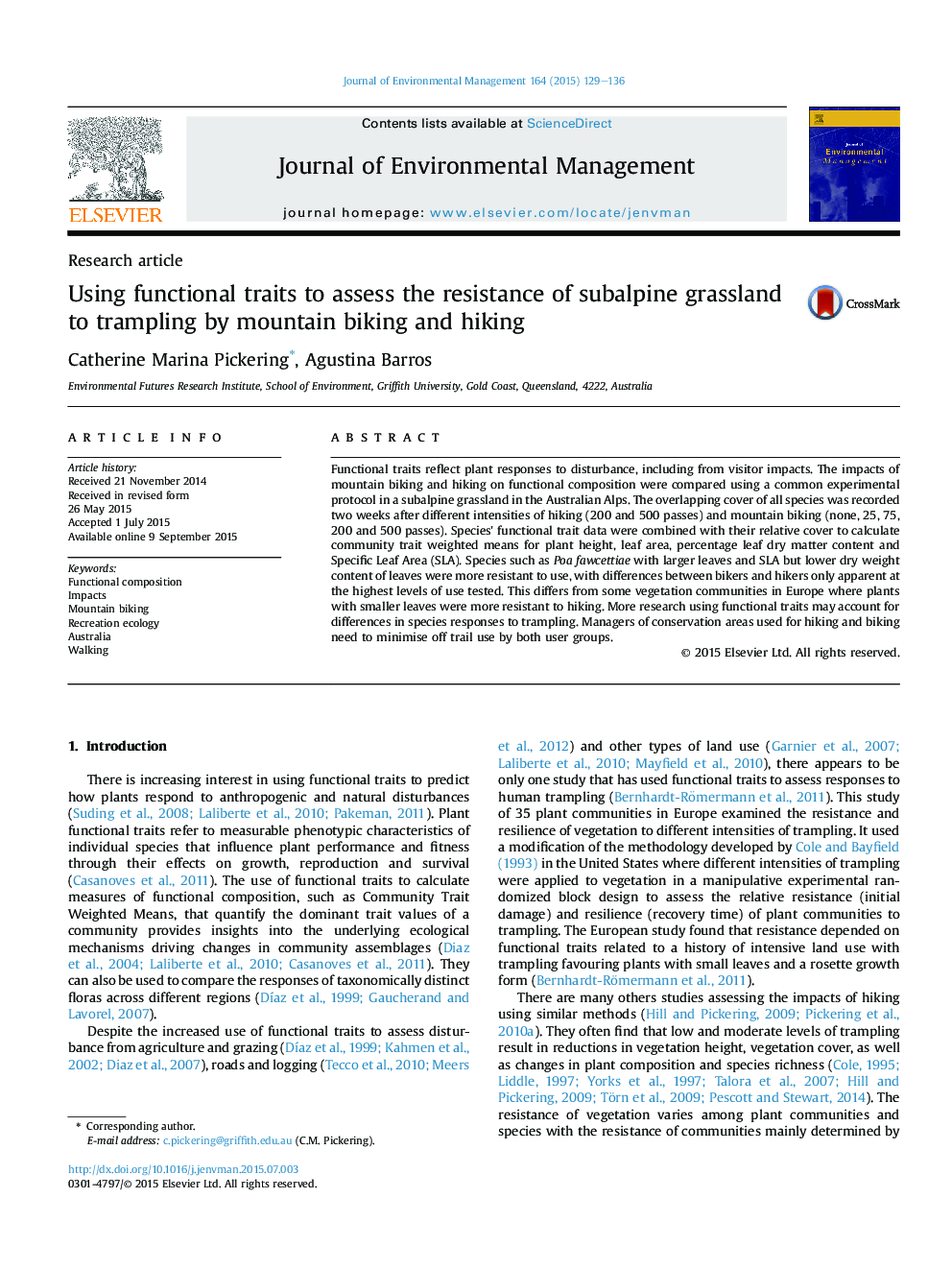| Article ID | Journal | Published Year | Pages | File Type |
|---|---|---|---|---|
| 1055416 | Journal of Environmental Management | 2015 | 8 Pages |
•Functional traits reveal ecological process driving plant responses to disturbance.•Relative impacts from biking and hiking were assessed using functional traits.•Taller plants with large leaves but low percent dry matter content were more resistant.•Mountain biking only caused more damage than hiking at high levels of use.
Functional traits reflect plant responses to disturbance, including from visitor impacts. The impacts of mountain biking and hiking on functional composition were compared using a common experimental protocol in a subalpine grassland in the Australian Alps. The overlapping cover of all species was recorded two weeks after different intensities of hiking (200 and 500 passes) and mountain biking (none, 25, 75, 200 and 500 passes). Species' functional trait data were combined with their relative cover to calculate community trait weighted means for plant height, leaf area, percentage leaf dry matter content and Specific Leaf Area (SLA). Species such as Poa fawcettiae with larger leaves and SLA but lower dry weight content of leaves were more resistant to use, with differences between bikers and hikers only apparent at the highest levels of use tested. This differs from some vegetation communities in Europe where plants with smaller leaves were more resistant to hiking. More research using functional traits may account for differences in species responses to trampling. Managers of conservation areas used for hiking and biking need to minimise off trail use by both user groups.
